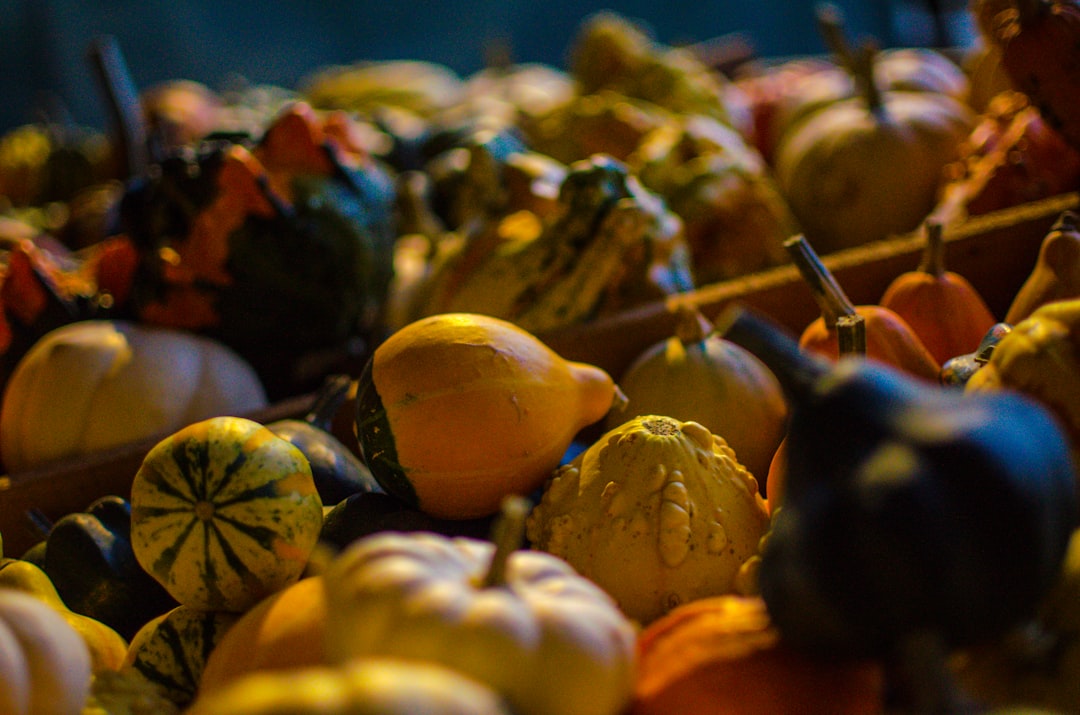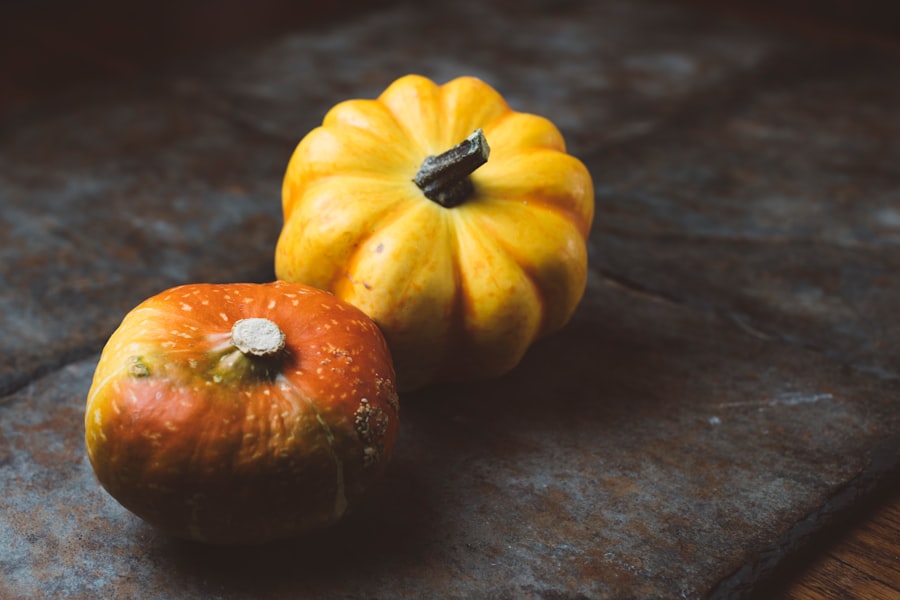Container Gardening: Growing Squash with Ease

Container gardening is a method of growing plants in pots, containers, or other portable containers instead of planting them directly in the ground. It is a popular gardening technique for those who have limited space, such as apartment dwellers or individuals with small yards. Container gardening offers numerous benefits, including the ability to grow a variety of plants, flexibility in terms of placement and design, and ease of maintenance.
Key Takeaways
- Container gardening is a great way to grow plants in small spaces.
- Growing squash in containers has many benefits, including saving space and controlling soil quality.
- Choosing the right container for squash is important, as it affects the plant’s growth and health.
- Squash requires well-draining soil and regular fertilization to thrive in containers.
- Proper watering and drainage are crucial for preventing root rot and other issues in squash plants.
Benefits of Growing Squash in Containers
Growing squash in containers offers several advantages. First and foremost, it is a space-saving option. Squash plants can take up a significant amount of space in a traditional garden bed, but by growing them in containers, you can maximize your available space and still enjoy a bountiful harvest. Additionally, container gardening makes it easier to maintain your squash plants. You can control the soil quality, water levels, and sunlight exposure more effectively when they are in containers. Lastly, growing squash in containers provides protection from pests and diseases. By keeping your plants off the ground and away from potential threats, you can reduce the risk of infestations and diseases.
Choosing the Right Container for Squash
When selecting a container for growing squash, there are a few factors to consider. First, you need to ensure that the container is large enough to accommodate the root system of the squash plant. Squash plants have extensive root systems, so choose a container that is at least 18 inches deep and wide. Additionally, consider the material of the container. Options include plastic, ceramic, or terracotta pots. Each material has its pros and cons in terms of durability and insulation properties. Lastly, make sure the container has proper drainage holes to prevent waterlogging and root rot.
Soil and Fertilizer Requirements for Squash
| Soil and Fertilizer Requirements for Squash | Optimal Range | Units |
|---|---|---|
| Soil pH | 6.0-6.8 | pH units |
| Organic Matter | 2-3% | % |
| Nitrogen | 50-100 | lbs/acre |
| Phosphorus | 50-80 | lbs/acre |
| Potassium | 100-150 | lbs/acre |
| Calcium | 1000-2000 | lbs/acre |
| Magnesium | 200-400 | lbs/acre |
Squash plants thrive in well-draining soil with a slightly acidic pH level between 6.0 and 6.8. It is important to choose a high-quality potting mix that is specifically formulated for container gardening. This type of soil will provide the necessary nutrients and drainage for your squash plants. In terms of fertilization, squash plants are heavy feeders and require regular fertilization. You can choose between organic or synthetic fertilizers, depending on your preference. Organic options include compost, well-rotted manure, or fish emulsion. Synthetic fertilizers, on the other hand, provide a more precise balance of nutrients.
Watering and Drainage Tips for Squash
Proper watering and drainage are crucial for the success of your squash plants in containers. Squash plants require consistent moisture, so it is important to water them regularly. The frequency and amount of watering will depend on factors such as the size of the container, the weather conditions, and the stage of growth of the plant. It is important to water deeply and thoroughly, ensuring that the water reaches the roots. However, it is equally important to ensure proper drainage to prevent waterlogging and root rot. Make sure your containers have drainage holes and use a well-draining potting mix.
Sunlight and Temperature Needs for Squash

Squash plants require full sun exposure to thrive. They need at least six to eight hours of direct sunlight each day. When choosing a location for your containers, make sure they are placed in an area that receives adequate sunlight throughout the day. In terms of temperature requirements, squash plants prefer warm weather. They thrive in temperatures between 70°F and 85°F (21°C to 29°C). However, they can tolerate slightly cooler temperatures as long as they are not exposed to frost or freezing temperatures. If you live in an area with extreme weather conditions, consider using protective covers or moving your containers indoors during unfavorable weather.
Planting and Caring for Squash in Containers
To plant squash in containers, start by selecting the appropriate variety of squash seeds. There are many different types of squash to choose from, including zucchini, yellow squash, and butternut squash. Follow the instructions on the seed packet for planting depth and spacing. Once your seeds have germinated and sprouted, thin them out to ensure proper spacing and airflow. This will help prevent overcrowding and reduce the risk of diseases. As your plants grow, you may need to provide support for vining varieties. Options include trellises, stakes, or cages. Regularly monitor your plants for any signs of pests or diseases and take appropriate action if necessary.
Pest and Disease Management for Squash
Squash plants are susceptible to a variety of pests and diseases. Common pests that can affect squash include aphids, squash bugs, and cucumber beetles. Diseases such as powdery mildew and bacterial wilt can also pose a threat to your plants. To prevent infestations and diseases, practice good garden hygiene by removing any debris or fallen leaves from around your containers. Regularly inspect your plants for any signs of pests or diseases and take immediate action if necessary. There are organic pest control methods available, such as using insecticidal soaps or neem oil sprays. If the infestation or disease becomes severe, you may need to resort to chemical pesticides.
Harvesting and Storing Squash from Containers
Knowing when to harvest your squash is essential to ensure optimal flavor and texture. Different varieties of squash have different signs of maturity, so refer to the seed packet or plant label for specific instructions. Generally, summer squash should be harvested when they are small and tender, while winter squash should be left on the vine until they are fully matured. To harvest your squash, use a sharp knife or pruning shears to cut the fruit from the vine, leaving a small stem attached. After harvesting, store your squash in a cool, dry place with good ventilation. Winter squash can be stored for several months, while summer squash should be consumed within a few days.
Recipes and Cooking Ideas for Fresh Squash from Your Container Garden
Once you have harvested your fresh squash from your container garden, there are countless delicious recipes and cooking ideas to explore. Roasting squash is a popular method that brings out its natural sweetness and enhances its flavor. You can also use squash to make soups and stews, adding depth and richness to your dishes. Additionally, squash can be used in salads or as a side dish, either raw or cooked. Get creative with your cooking and experiment with different flavors and combinations to make the most of your homegrown squash.
Container gardening offers a convenient and space-saving way to grow a variety of plants, including squash. By growing squash in containers, you can enjoy the benefits of space-saving gardening, easy maintenance, and protection from pests and diseases. When choosing containers for squash, consider the size and material options, as well as the importance of proper drainage. Provide your squash plants with the right soil and fertilizer, ensuring they receive adequate water and sunlight. Take care of your plants by following proper planting and caring techniques, and be vigilant in managing pests and diseases. Finally, enjoy the fruits of your labor by harvesting fresh squash from your container garden and exploring various recipes and cooking ideas. Container gardening is a rewarding experience that allows you to grow your own food and connect with nature, even in limited spaces.
If you’re interested in growing squash in a container, you’ll definitely want to check out this informative article from Lawn World. They provide valuable tips and insights on how to successfully grow squash in containers, ensuring a bountiful harvest even if you have limited space. From choosing the right container size to selecting the appropriate soil mix, this article covers all the essential steps for container gardening. To learn more, visit https://www.lawnworld.com/sitemap.html.
FAQs
What is squash?
Squash is a type of vegetable that belongs to the gourd family. It comes in different varieties such as zucchini, yellow squash, and butternut squash.
Can squash be grown in a container?
Yes, squash can be grown in a container as long as the container is large enough to accommodate the plant’s root system and the soil is well-draining.
What type of container is best for growing squash?
A container that is at least 18 inches deep and 24 inches wide is best for growing squash. It should also have drainage holes to prevent waterlogging.
What type of soil is best for growing squash in a container?
A well-draining soil mix that is rich in organic matter is best for growing squash in a container. It should also have a pH level between 6.0 and 6.8.
How often should I water my squash plant in a container?
Squash plants in containers should be watered regularly, at least once a day during hot weather. The soil should be kept moist but not waterlogged.
What type of fertilizer should I use for growing squash in a container?
A balanced fertilizer with equal amounts of nitrogen, phosphorus, and potassium is best for growing squash in a container. It should be applied every two weeks during the growing season.
How much sunlight does a squash plant in a container need?
Squash plants in containers need at least 6 hours of direct sunlight per day. They should be placed in a sunny location or under grow lights if grown indoors.
When should I harvest my squash?
Squash should be harvested when they are mature but still tender. This is usually when they are 6-8 inches long for zucchini and yellow squash, and when the skin is hard for butternut squash.



